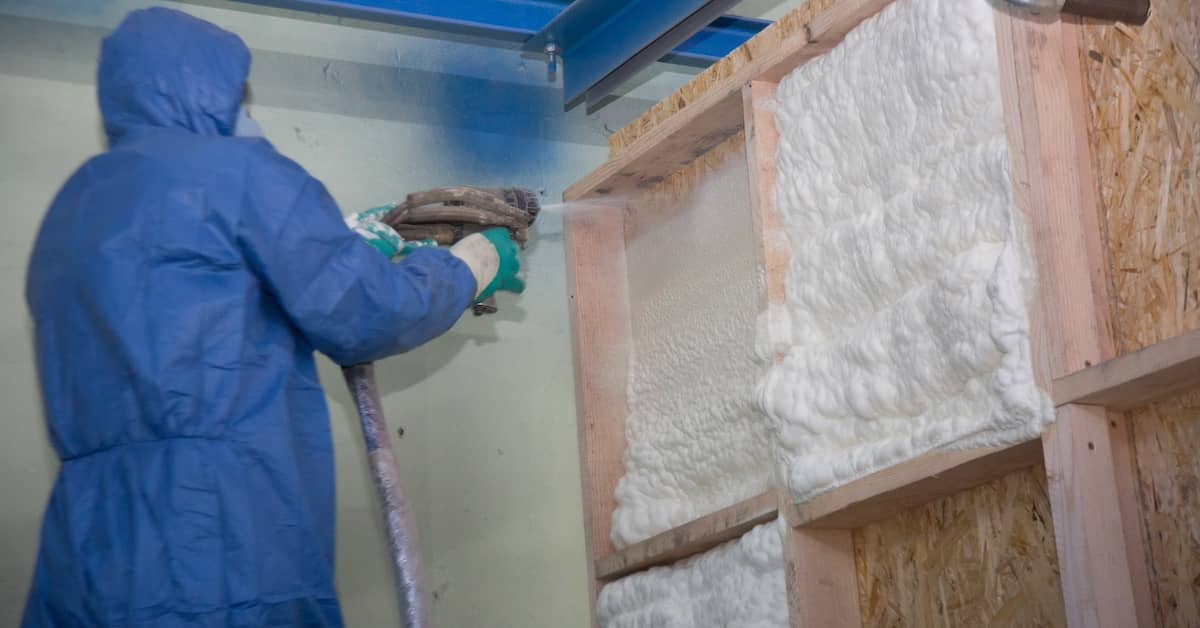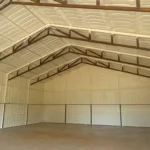Proper insulation is crucial for protecting metal buildings from extreme temperatures, ensuring comfort, energy efficiency, and structural integrity. Metal buildings are particularly vulnerable to temperature fluctuations, which can lead to energy inefficiencies, condensation problems, and reduced durability. By investing in effective insulation, metal building owners can minimize temperature extremes inside their structures and enhance overall performance.
This article will explore the importance of insulation for metal buildings, types of insulation that work best, factors to consider, and common questions about insulation and temperature control.
Understanding the Role of Insulation
Insulation serves as a barrier between the internal environment of a building and the external weather conditions. It helps in maintaining a stable temperature inside, preventing heat loss during cold weather and reducing heat gain during warmer months. For metal buildings, insulation is especially important because metal is a poor insulator and tends to absorb and release heat rapidly.
By installing proper insulation, the following benefits can be achieved:
- Temperature Regulation: Insulation minimizes the impact of external temperatures on the internal environment, keeping it comfortable year-round.
- Energy Efficiency: Proper insulation reduces the need for excessive heating or cooling, lowering energy consumption and utility bills.
- Condensation Control: Insulation prevents moisture from accumulating inside the building, reducing the risk of mold, rust, and structural damage.
- Enhanced Durability: Insulation protects the metal structure from extreme temperatures, which can cause expansion and contraction that leads to wear and tear over time.
Types of Insulation for Metal Buildings
Selecting the right insulation for your metal building depends on several factors, including climate, building size, and intended use. Below are the most common types of insulation for metal buildings.
1. Batt Insulation
Batt insulation is made from fiberglass or mineral wool, offering a cost-effective solution for temperature control. It is typically installed between the framing of the metal building.
Pros:
- Affordable
- Easy to install
- Good for soundproofing
Cons:
- Can compress over time, reducing effectiveness
- Less effective in very cold or hot climates
2. Spray Foam Insulation
Spray foam insulation is applied as a liquid that expands to fill gaps and cracks, creating an airtight seal. It provides superior thermal performance and moisture control.
Pros:
- High R-value per inch
- Expands to fill gaps
- Provides excellent air sealing
Cons:
- Higher cost compared to batt insulation
- Requires professional installation
3. Reflective or Radiant Barrier Insulation
Radiant barriers are designed to reflect heat away from the building, especially in hot climates. They are typically used in combination with other insulation types.
Pros:
- Great for hot climates
- Reduces cooling costs
- Easy to install
Cons:
- Not effective for cold climates
- May need additional insulation for complete temperature control
4. Foam Board Insulation

Foam board insulation consists of rigid panels made from expanded polystyrene (EPS), extruded polystyrene (XPS), or polyisocyanurate. It provides a solid barrier against heat transfer.
Pros:
- Moisture-resistant
- Lightweight and easy to handle
- Good R-value
Cons:
- Can be more expensive than batt insulation
- Requires proper sealing to prevent air leaks
| Insulation Type | R-value (per inch) | Moisture Resistance | Installation Difficulty | Typical Cost |
| Batt Insulation | 3.5-4.0 | Low | Easy | Low |
| Spray Foam Insulation | 6.0-7.0 | High | Moderate | High |
| Radiant Barrier Insulation | 3.0-6.0 | Low | Easy | Moderate |
| Foam Board Insulation | 4.0-5.0 | High | Moderate | Moderate-High |
[Image: Description of different types of insulation for metal buildings]
Things to Consider Before Making a Decision
Before selecting insulation for your metal building, consider the following factors:
1. Climate
The local climate plays a significant role in the type of insulation you should choose. In regions with extreme heat, reflective barriers may be more beneficial, while colder climates may require materials with a higher R-value, such as spray foam or foam boards.
2. Building Usage
Consider how the building will be used. For storage spaces or workshops, basic insulation may suffice, but if the building will be used for office spaces or living quarters, higher insulation values are necessary to maintain comfort.
3. Budget
Insulation costs can vary greatly. While spray foam and foam boards may offer superior performance, they come at a higher price point. It’s important to balance performance needs with your budget constraints.
4. Installation Method
Some types of insulation, such as batt insulation, can be installed by DIYers, while others like spray foam may require professional installation. Consider the time, cost, and complexity of the installation process when making your decision.
Common Questions About Metal Building Insulation
1. What is the best insulation for a metal building in a cold climate?
Spray foam insulation or foam board insulation are ideal for cold climates as they offer high R-values and excellent moisture resistance, which helps in controlling condensation.
2. Can I install insulation in my metal building myself?
Some types of insulation, like batt insulation or radiant barriers, can be installed as DIY projects. However, spray foam typically requires professional installation due to the specialized equipment needed.
3. How does insulation help prevent condensation in metal buildings?
Insulation helps maintain a consistent temperature inside the building, preventing the warm, moist air from coming into contact with the cold metal surfaces where condensation can form. It acts as a thermal barrier, reducing the risk of moisture buildup.
4. How much insulation do I need for a metal building?
The amount of insulation required depends on factors such as climate, building size, and the intended use of the space. A higher R-value is generally needed in areas with extreme temperatures, while areas with mild climates may require less.

Bonus Tips
- Consider Hybrid Systems: In some cases, combining two or more types of insulation, such as spray foam and foam board, may provide the best thermal performance for your metal building.
- Don’t Forget the Roof: Insulating the roof of your metal building is just as important as the walls, especially in areas prone to extreme temperature shifts. A well-insulated roof can significantly reduce heating and cooling costs.
- Seal Gaps and Cracks: Regardless of the insulation type you choose, ensure that gaps around windows, doors, and joints are sealed to enhance the overall effectiveness of the insulation.
Topic FAQ
1. What is the R-value of spray foam insulation?
Spray foam insulation typically has an R-value between 6.0 and 7.0 per inch, providing excellent thermal resistance and moisture control.
2. How long will the insulation in my metal building last?
Most insulation types, including spray foam and foam board, can last for several decades if properly installed and maintained.
3. Does insulation affect the soundproofing of a metal building?
Yes, insulation, especially batt and spray foam types, can help reduce noise transmission, making the building quieter and more comfortable.
4. Is it worth the investment to insulate a metal building?
Investing in proper insulation for a metal building is worth it for long-term savings on energy bills, improved comfort, and protection against temperature fluctuations and condensation damage.
Make the Right Decision
Proper insulation can dramatically improve the comfort, energy efficiency, and longevity of your metal building. By carefully considering the climate, building usage, and budget, you can choose the right insulation to keep your space well-protected from extreme temperatures. Make sure to factor in installation requirements and long-term performance when making your decision.

